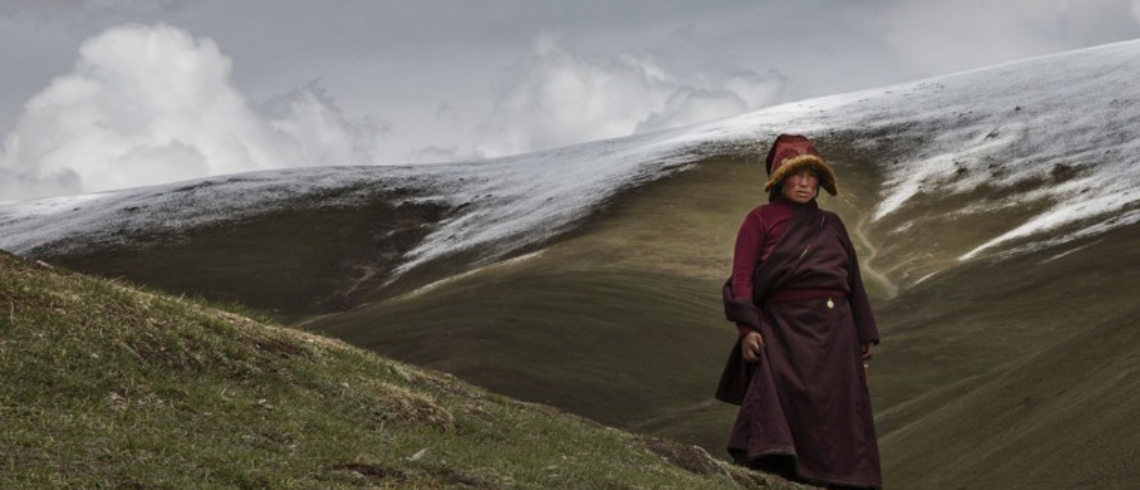Genetic history: the origin of modern-day Tibetan Chinese and their perseverance

The Tibetan Plateau, often referred to as the “Roof of the World,” is a stunning expanse of high-altitude wilderness. Visitors worldwide are attracted to the plateau’s snow-capped peaks, pristine lakes, and vast grasslands.However, the plateau’s extreme elevation results in significantly lower oxygen levels, making it a challenging environment for human habitation and exploration.
First-time hikers on the Tibetan Plateau may face considerable challenges due to its high altitude and corresponding lower oxygen levels. Symptoms such as shortness of breath, fatigue, and headaches can make even simple activities like walking difficult. However, the local people, who have lived on the plateau for generations, have developed remarkable adaptability to the low-oxygen environment. They can perform physical tasks with ease and are often skilled mountaineers, navigating rugged terrain with agility and grace. Their resilience is a testament to the human body’s ability to adapt to even the harshest environments, and the difference lies in their genes.
In 2017, scientists from China’s Wenzhou Medical University discovered that the locals’ unique ability stems from the high-altitude adaptive EPAS1 allele in Tibetans’ genomes. An allele is a variant form of a gene that determines a particular trait or characteristic. The EPAS1 gene provides instructions for making a protein called HIF-2α, which in turn is part of a larger protein complex called HIF. The HIF plays a crucial role in adapting to changing oxygen levels. The high-altitude adaptive EPAS1 alleles increase HIF-2α production, helping people adapt to lower oxygen levels at high altitudes by enhancing oxygen transport to their tissues. However, the adaptation’s origin remains unresolved.
A recent study conducted by scientists from the Institute of Vertebrate Paleontology and Paleoanthropology, affiliated with the Chinese Academy of Science, offers new insight into this mystery. The researchers collected bone powder from 97 human samples unearthed from 29 archaeological sites across the Tibetan Plateau. They extracted ancient DNA from these samples for sequencing and further analysis.
The study, published in Science on March 17, uncovered evidence suggesting that the EPAS1 gene variant has been present in Tibetan plateau populations for over 5,000 years. The variant’s frequency among the population has steeply increased over the past 2,800 years, particularly in the past 700 years, indicating that the plateau’s people have been evolving to survive in their unique environment for millennia.
Additionally, the study revealed that this adaptive gene variant was inherited from archaic humans, known as Denisovans, and is found at a surprisingly high frequency in ancient plateau populations. This discovery raises questions about the origin of modern Tibetans.
Genome analysis has provided valuable insights into the genetic history of the Tibetan Plateau’s ancient inhabitants, showing strong genetic ties with modern-day ethnic groups like the Tibetan, Sherpa, and Qiang communities who still reside on or near the plateau. By comparing the oldest genomes to those of ancient and contemporary populations across Asia, researchers have determined. that present-day Tibetans’ ancestors likely migrated to the plateau from the rest of present-day China, in contrast to the Asian subcontinent’s population, who have primarily immigrated from eastern Eurasia and central Asia.
The analysis of genomes reveals multiple instances of lowland Chinese immigrants arriving on the Tibetan Plateau, suggesting interactions between existing Tibetan settlers and newcomers likely occurred through trade with millet farmers from the upper Yellow River region of present-day northeastern China before 4,700 years ago.
In more recent history, the past 700 years have seen a further influx of genes from the east. These findings shed light on the complex history of migration and settlement on the Tibetan Plateau., highlighting the ongoing exchange and mixing of genetic material between different populations over time.
This research not only sheds light on the fascinating history of human migration and settlement across the diverse landmass of Asia but also underscores the incredible adaptability of humans in the face of extreme environmental challenges. As scientists continue to unravel the mysteries of our genetic past, we gain a deeper understanding of our heritage and the inherent resilience that has allowed humanity to thrive in even the most inhospitable environments.
Wang, H., Yang, M. A., Wangdue, S., Lu, H., Chen, H., Li, L., Dong, G., Tsrin, T., Yuan, H., Fu, Q., & 27 others. (2023). Human genetic history on the Tibetan Plateau in the past 5100 years. Science Advances, 9(11), eadd5582. https://doi.org/10.1126/sciadv.add5582
Yang, J., Jin, Z. B., Chen, J., Qu, J. (2017). Genetic signatures of high-altitude adaptation in Tibetans. Proceedings of the National Academy of Sciences, 114(16), 4189-4194. https://doi.org/10.1073/pnas.1617042114



